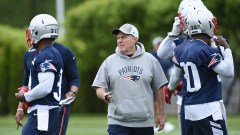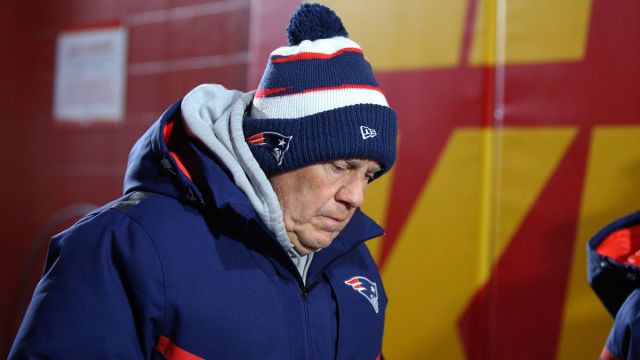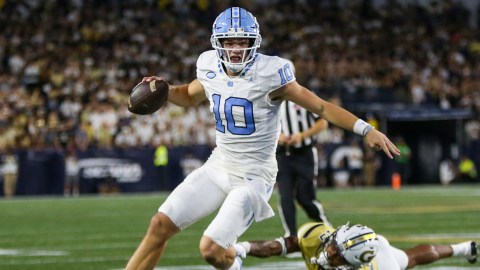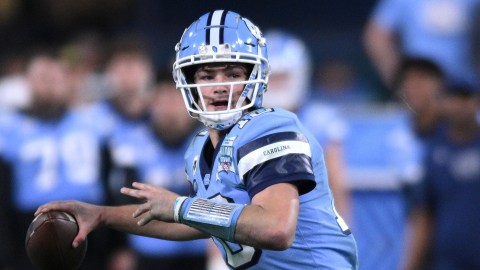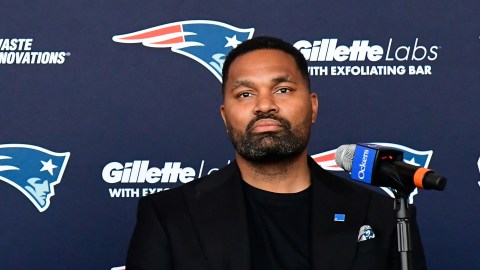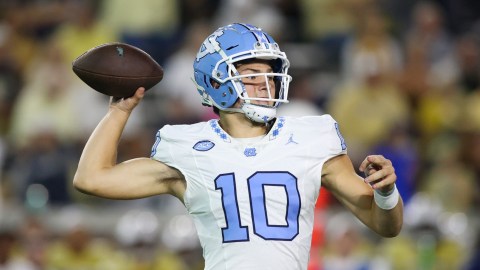What the New England Patriots lack in top-end wide receiver talent they more than make up for in tight end depth.
While the Patriots’ overall set of offensive weapons doesn’t look among the NFL’s best on paper, the unit’s composition could make New England a tough team to defend in 2021.
For the price it cost to sign Jonnu Smith and Hunter Henry this offseason, the Patriots should have the league’s best 1-2 punch at tight end. New England’s top competition for the tight end depth crown comes from the Baltimore Ravens (Mark Andrews and Nick Boyle), Cleveland Browns (Austin Hooper, David Njoku and Harrison Bryant), New York Giants (Evan Engram and Kyle Rudolph), Philadelphia Eagles (Zach Ertz and Dallas Goedert), Chicago Bears (Jimmy Graham and Cole Kmet), Atlanta Falcons (Kyle Pitts and Hayden Hurst) and Tampa Bay Buccaneers (Rob Gronkowski, O.J. Howard and Cameron Brate).
The Patriots’ tight end duo is definitely the most expensive combination. Smith and Henry, both of whom make $12.5 million per year, are tied for third among NFL tight ends in average annual value. Only San Francisco 49ers tight end George Kittle ($15 million per year) and Kansas City Chiefs tight end Travis Kelce ($14.312 million per year) make more money on an annual basis, and neither player has a No. 2 even close to the caliber of Smith or Henry.
Interestingly, given the tight end combinations we listed above, only one NFL team played over 50 percent of offensive snaps last season with at least two tight ends on the field, and it was Smith’s former team, the Tennessee Titans (50.7 percent), per Sports Info Solutions. Only two teams used two tight ends on the majority of offensive snaps in 2019: the Eagles (57 percent) and Minnesota Vikings (53.7 percent). No team met that criteria in 2018.
The Patriots’ offensive deployment (assuming Henry and Smith stay healthy) will be a major deviation from current NFL offensive trends. We don’t know precisely how often the Patriots will utilize two or more tight ends (they also have 2020 third-round picks Devin Asiasi and Dalton Keene plus veteran Matt LaCosse on their roster), but using their 2011 season, when they used a base two-tight end offense with Rob Gronkowski and Aaron Hernandez, as a barometer, it should put them in their own stratosphere compared to other offenses.
The Patriots used at least two tight ends on more than 70 percent of snaps in 2011. Given how much Smith and Henry are being paid, it would be a waste of money if the Patriots’ snap rates were not at least similar this season. So, even comparing them to the Titans in 2020 or the Eagles and Vikings of 2019 would be a waste of time.
New England’s offense should force opposing defenses out of their comfort zones. NFL teams, as a whole, only used two or more tight ends on 28.4 percent of snaps in 2020. That was up from 27.9 percent in 2019 and 24.3 in 2018 and down from 34.5 percent in 2017 and 29.4 percent in 2016. The Patriots will essentially be running a completely different offense than what defenses are accustomed to combatting.
As the NFL has gone away from using fullbacks and a second tight end with regularity, teams have veered toward 11 personnel (one running back, one tight end, three wide receivers) packages. Defenses have matched that by putting a higher value on defensive backs and smaller linebackers. The Patriots, for example, primarily stayed in a base dime defense last season with safety Adrian Phillips serving as a starting linebacker. While the Patriots’ defense got smaller last season, their offense is getting much bigger in 2021.
Offensive coordinator Josh McDaniels only used two tight ends on 34 total snaps (3.5 percent) in 2020. New England never put more than two tight ends on the field at once. The Patriots had far and away the lowest rate of multi-tight end sets last season while leading the league (37 percent) in 21 personnel (two running backs, one tight end, two wide receivers).
Unless opposing NFL teams go back and watch film on the 2011 Patriots (when Bill O’Brien was offensive coordinator and Tom Brady was at quarterback), they’ll have no real way to prepare for New England’s offensive plan this season.
The Patriots’ base two-tight end set also will force defenses to show their hand and risk getting exploited by New England’s offense. If a defense comes out in base on early downs, then New England will more than likely be passing the ball regardless of who’s at quarterback this season. If they match New England’s two-tight end set with nickel or dime, then the Patriots will likely try to run all over the extra defensive backs on the field by using Smith and Henry, both experienced blockers, as battering rams to assist what should be one of the NFL’s better offensive lines and running back stables.
Perhaps unsurprisingly, offensive success rate has been higher in 12 personnel (one running back, two tight ends, two wide receivers) than 11 personnel (one running back, one tight end, three wide receivers) in recent years.
| 12 personnel | 11 personnel | |
|---|---|---|
| All – 2020 | 51% | 48% |
| Pass – 2020 | 53% | 47% |
| Run – 2020 | 50% | 52% |
| All – 2019 | 48% | 46% |
| Pass – 2019 | 49% | 44% |
| Run – 2019 | 46% | 49% |
| All – 2018 | 49% | 47% |
| Pass – 2018 | 51% | 45% |
| Run – 2018 | 47% | 50% |
The reason essentially comes down to unpredictability. When a team puts two tight ends on the field, the opposing defense largely expects it to run the ball. So, with that comes more success passing the ball, raising the success rate overall since teams pass more than they run. By deploying a base two-tight end set, however, the Patriots should actually become less predictable when they choose to run the ball.
The Patriots passed on 61 percent of plays in 11 personnel last season. They ran the ball on 69 percent of plays in 21 personnel. Since Smith and Henry are top-end pass catchers and solid run blockers, New England has either option when they share the field, and they won’t need to swap out personnel based on the play call. Don’t be surprised if that leads to more no-huddle utilization. Last season, when the Patriots wanted to run the ball, they inserted fullback Jakob Johnson into the offense. When they wanted to pass, they took him out and put a third wide receiver back onto the field. The Patriots can stay in 12 personnel all game if they want to. They have the talent and versatility, and that can only help mask New England’s lack of depth at wide receiver.
The Patriots first showed interest in a return to two-tight end sets last season when they drafted Asiasi and Keene, but neither player was really ready for full-time involvement last season. The Patriots weren’t expected to sign both Smith and Henry in free agency this offseason despite a plethora of cap space, but adding the two top tight ends very well could prove to be a smart investment. Premier tight ends are both harder to find and more versatile than a high-priced wide receiver. It’s highly unlikely Smith and Henry both put up 1,000-yard receiving seasons, but they’ll contribute in the run game and keep defenses on their toes.
While the sum of the Patriots’ pass-catching parts might not rank among the league’s elite, the whole could wind up proving extremely valuable based on the makeup of the entire offense.

